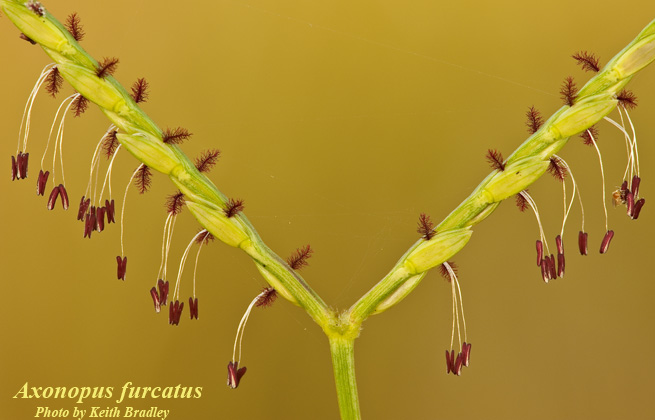Difference between revisions of "Axonopus furcatus"
(→Description) |
(→Distribution) |
||
| Line 28: | Line 28: | ||
==Distribution== | ==Distribution== | ||
| + | The "A. furcatus" is found along the Coastal Plains of Virginia to Florida and west to Texas and Arkansas. <ref name= "USDA Plant Database"/> | ||
| + | |||
==Ecology== | ==Ecology== | ||
===Habitat=== <!--Natural communities, human disturbed habitats, topography, hydrology, soils, light, fire regime requirements for removal of competition, etc.--> | ===Habitat=== <!--Natural communities, human disturbed habitats, topography, hydrology, soils, light, fire regime requirements for removal of competition, etc.--> | ||
Revision as of 18:47, 16 May 2018
| Axonopus furcatus | |
|---|---|

| |
| Photo by the Atlas of Florida Plants Database | |
| Scientific classification | |
| Kingdom: | Plantae |
| Division: | Magnoliophyta - Flowering plants |
| Class: | Liliopsida - Moncots |
| Order: | Cyperales |
| Family: | Poaceae |
| Genus: | Axonopus |
| Species: | A. furcatus |
| Binomial name | |
| Axonopus furcatus (Fluegge) Hitchcock | |
Contents
Taxonomic Notes
Synonym: Paspalum furcatum (Flügge)
Varieties: none
Description
A. furcatus is a perennial graminoid of the Poaceae family native to North America. [1]
Distribution
The "A. furcatus" is found along the Coastal Plains of Virginia to Florida and west to Texas and Arkansas. [1]